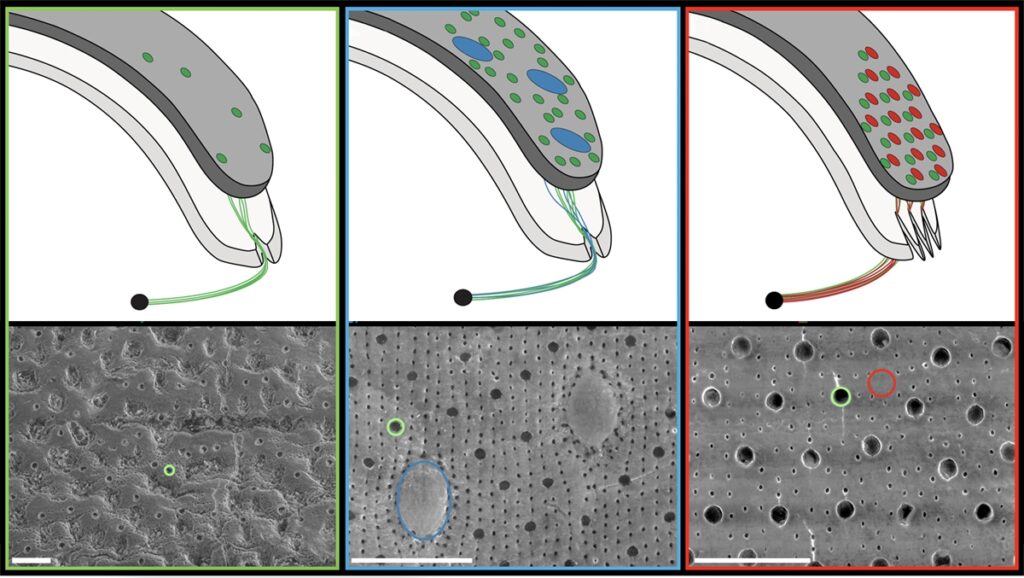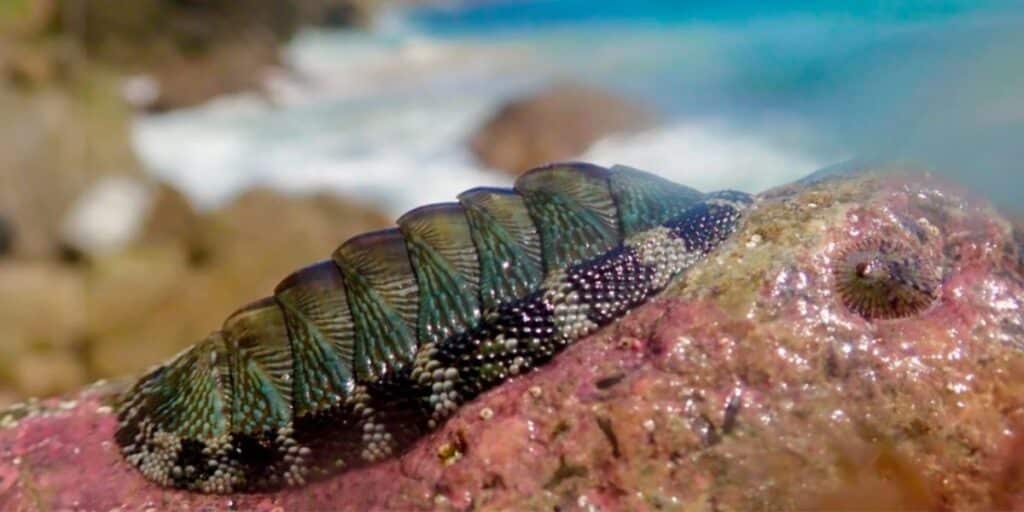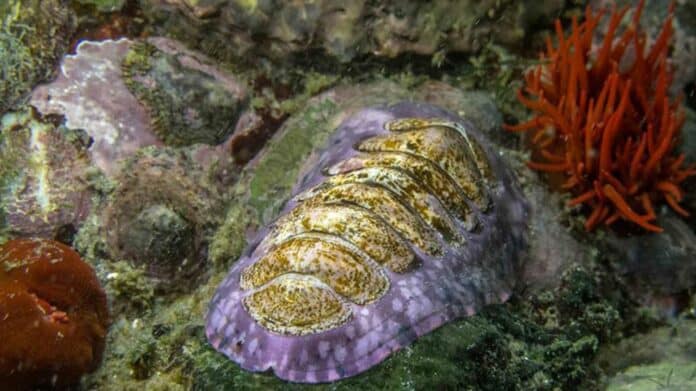A peculiar class of marine mollusks is called chitons. Even though they are rarely in the news, they have achieved some amazing things that have garnered attention. For example, the iron mineral magnetite, which coats the teeth of all species, is the hardest material ever made by a living thing. And another iron mineral, suitably termed Santabarbaraite, is used by at least one species.
A group of researchers at the Department of Ecology, Evolution, and Marine Biology (EEMB) at UC Santa Barbara, under guidance of Rebecca Varney, found that some of these tough mollusks had the most recently evolved lens-equipped eyes. Furthermore, the two types of eyes that make up this group originated in four ways. The researchers outline the causes of this unusual configuration in this new study.
Chitons are related to squid, snails, and scallops. However, their eyes aren’t located on their soft bodies. Instead, many of their sensory organs are embedded directly into their segmented shell.
Coauthor Daniel Speiser of the University of South Carolina said, “I don’t think there’s any other animal that builds its eyes into its armor like a chiton does.”

“The most numerous of these organs are called aesthetes, small sensory structures found in the outermost layer of the shells of all chitons. Scientists are still investigating their function, but if they do detect light, it would be on a very rudimentary level.”
The two types of eyes that did evolve in some of these animals—the more complex shell eyes and the more numerous eyespots—were probably derived from aesthetes. Comparably huge to human eyes, shell eyes use a lens to focus incoming light and create an image on a photosensitive layer at the rear.
Nevertheless, aragonite is the mineral that makes up this lens in chitons. On the other hand, some chitons have smaller eyespots that work more like individual pixels or an insect’s compound eye, creating a visual sensor all over the chiton’s shell. Chinons add these structures to newly growing shell margins.
To study how complex systems evolve, scientists used chiton eyes as an example in his classes as a Professor in EEMB. Coauthor Speiser worked on chitons as part of his doctoral thesis before joining Oakley’s lab as a postdoctoral researcher.
Lead author Varney, one of Oakley’s current postdocs, said, “We wanted to know: Is there something we can identify that is guiding evolution in these different groups toward eyespots or shell eyes?”
The researchers created a chiton family tree using DNA from specimens conserved in coauthor Doug Eernisse’s global chiton collection, which is currently housed at the Santa Barbara Museum of Natural History. Coauthors Morris Aguilar and Johanna Cannon created the molecular instruments used to examine the chiton genomes. After that, Varney plotted which groups have shell eyes and eyespots, which produced an interesting result.
Instead of the two groups scientists had assumed to have each created a distinct visual system, there were four groups, with two pairs convergent on the same structure.
Varney said, “We went in knowing there were two types of eyes, so we were not expecting four independent origins. The fact that chitons evolved eyes four times, in two different ways, is pretty amazing to me.”
Oakley said, “It almost seemed too strange to be true. And the groups that arrived at similar structures weren’t even the ones most closely related to each other. So what could’ve led to this curious setup?”
Varney started examining the distinctions among these animals to try and find any hint as to what led them to arrive at distinct answers for the same problem. Luckily for her, different species of chitons can be identified by the number of slits on the edge of each segment of their shell. Because it appears in every description of a newly discovered species, this information is thus thoroughly documented.
This is meaningless without context, yet a pattern started to show itself. Varney saw that chitons with eyespots have many slits in their head part, sometimes as many as twenty notches. On the other hand, this region of the chitons that developed the larger shell eyes often had eight slits. However, how could this variation have caused the groups to make two distinct adaptations?
The chiton’s body receives nerve signals from its shell through these notches. It appears that species with fewer slits develop more complex, smaller, and larger shell eyes. On the other hand, eyespots that are marginally simpler and more frequent were able to form in individuals with more slits. Furthermore, scientists are still determining what determines the number of notches, even though it is diagnostic for the species. Thus, the kind of visual system that arose appears to have been influenced by the quantity of slits present when visual systems did form.

Here we have an obvious demonstration in a natural system that evolution depends on what came before, even when what came before might seem completely unrelated,” Oakley said.
Next, scientists used fossils to measure the evolution of chitons over time. This would allow them to more accurately determine when, some 450 million years ago, the four groups of mollusks split apart and the chitons underwent the evolution of their visual systems.
They discovered that, having originated during the Cretaceous (150–100 million years ago), the shell eyes of chitons belonging to the families Toniciinae and Acanthopleurinae may be the most recently evolved lensed eyes. During the Jurassic Period (250–200 Mya), shell eyes originated in the unrelated species Schizochiton incisus.
To put things in perspective, most other examples of lensed eyes originated during the Cambrian period, when creatures were only starting to split into larger groups. In the meantime, eyespot evolution occurred as late as the Paleogene (75–25 Mya) in one group and as early as the Triassic (260–200 Mya) in another.
While some of these chitons have eyes capable of forming images, scientists are still investigating the extent of their visual perception.
This discovery confirms what scientists experience working with these chitons in the field.
Varney said, “When collecting chitons off rocks in the intertidal, you have to sneak up on the rock. Because if they see you, they will clamp down. And you can sit there with a nail file and try to pry the chiton off; you will lose.”
Speiser and his colleagues are continuing to investigate chiton vision. It’s a bit of a challenge.
Journal Reference:
- Rebecca Varney, Deniel Speiser et al. A morphological basis for path-dependent evolution of visual systems. Science. DOI: 10.1126/sscience.adg2689
